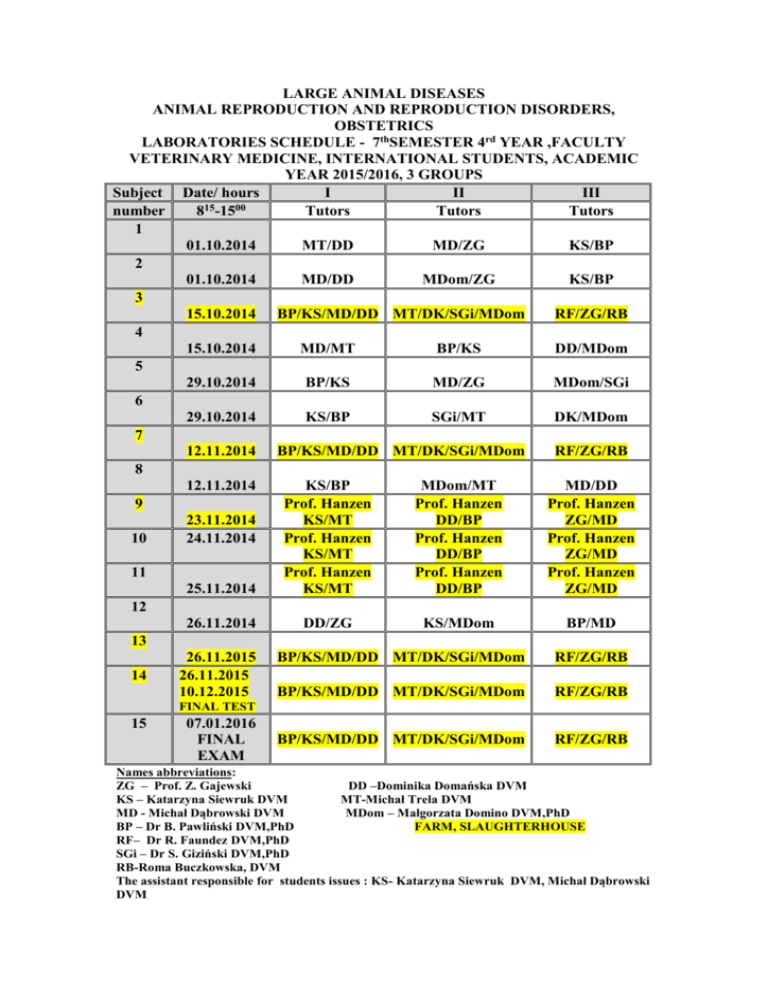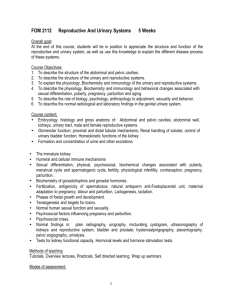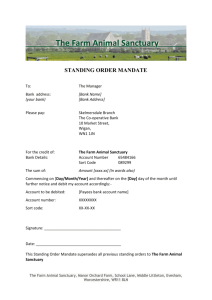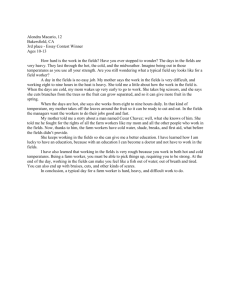B. Veterinary obstetrics - Klinika Wolica SGGW w Warszawie
advertisement

LARGE ANIMAL DISEASES ANIMAL REPRODUCTION AND REPRODUCTION DISORDERS, OBSTETRICS LABORATORIES SCHEDULE - 7thSEMESTER 4rd YEAR ,FACULTY VETERINARY MEDICINE, INTERNATIONAL STUDENTS, ACADEMIC YEAR 2015/2016, 3 GROUPS Subject Date/ hours I II III 15 00 number 8 -15 Tutors Tutors Tutors 1 01.10.2014 MT/DD MD/ZG KS/BP 2 01.10.2014 MD/DD MDom/ZG KS/BP 3 15.10.2014 BP/KS/MD/DD MT/DK/SGi/MDom RF/ZG/RB 4 15.10.2014 MD/MT BP/KS DD/MDom 5 29.10.2014 BP/KS MD/ZG MDom/SGi 6 29.10.2014 KS/BP SGi/MT DK/MDom 7 12.11.2014 BP/KS/MD/DD MT/DK/SGi/MDom RF/ZG/RB 8 12.11.2014 KS/BP MDom/MT MD/DD 9 Prof. Hanzen Prof. Hanzen Prof. Hanzen 23.11.2014 KS/MT DD/BP ZG/MD 10 24.11.2014 Prof. Hanzen Prof. Hanzen Prof. Hanzen KS/MT DD/BP ZG/MD 11 Prof. Hanzen Prof. Hanzen Prof. Hanzen 25.11.2014 KS/MT DD/BP ZG/MD 12 26.11.2014 DD/ZG KS/MDom BP/MD 13 26.11.2015 BP/KS/MD/DD MT/DK/SGi/MDom RF/ZG/RB 14 26.11.2015 10.12.2015 BP/KS/MD/DD MT/DK/SGi/MDom RF/ZG/RB FINAL TEST 15 07.01.2016 FINAL EXAM BP/KS/MD/DD MT/DK/SGi/MDom RF/ZG/RB Names abbreviations: ZG – Prof. Z. Gajewski DD –Dominika Domańska DVM KS – Katarzyna Siewruk DVM MT-Michał Trela DVM MD - Michał Dąbrowski DVM MDom – Małgorzata Domino DVM,PhD BP – Dr B. Pawliński DVM,PhD FARM, SLAUGHTERHOUSE RF– Dr R. Faundez DVM,PhD SGi – Dr S. Giziński DVM,PhD RB-Roma Buczkowska, DVM The assistant responsible for students issues : KS- Katarzyna Siewruk DVM, Michał Dąbrowski DVM LARGE ANIMAL DISEASES FVM WULS 2013/2014 ANIMAL REPRODUCTION AND REPRODUCTION DISORDERS, OBSTETRICS LABORATORIES DETAILED SCHEDULE A. Propedeutics and Reproduction Physiology 1. a) Morphological assessment of the reproductive organs in the non-pregnant and pregnant farm animals females. The reproductive organs in farm animals - clinical examination techniques, e.g. rectal palpation, vaginal examination. (WOLICA) b) The reproductive organs in farm animals - the clinical examination techniques in practice. Isolated reproductive tract - clinical examination techniques in practice . (WOLICA) 2. a) Oestrous cycle in cattle. Oestrous and ovulation detection and induction. The pregnancy progress and management methods for pregnancy diagnosis. Oestrous cycle in the sow and small ruminants and its stages detection. (WOLICA) b) Additional tests for the pregnancy detection: e.g. biological, chemical, immuneenzymatic, radio-immunological methods (WOLICA) 3. a) Ultrasound diagnostic management in veterinary gynaecology and obstetrics. The presentation of cow’s reproductive tract ultrasound examination and archival ultrasound images.(WOLICA) b) The clinical examination of the reproductive tracts in farm animals in practice. The evaluation of the uterine and ovarian status, the pregnancy diagnosis. Complementary diagnostic techniques to evaluate the reproductive tract, sample collection for bacteriological tests, uterus biopsy, hysteroscopy. (FARM, SLAUGHTERHOUSE) B. Veterinary Obstetrics 4. a) TEST- Propedeutics and Reproduction Physiology b) Uncomplicated parturition progress , i.e. delivery stages, the intra-uterine location of the fetus. The fundamental principles of the parturition assistance in farm animals. Obstetric manoeuvres, retropulsion, extension, traction, rotation. (WOLICA) c) The parturition pharmacological and conservative induction methods in various species. (WOLICA) 5. a) The difficult birth in cows and its clinical diagnosis. The assisted parturition while the wrong position and proportion of the foetus. Basic equipment required to complete a assisted parturition. The practical presentation on dummies. (WOLICA) b) The fundamental principles while assisted parturition per vaginam in farm animals. Obstetrical equipment. Fetotomy methods. Total and partial fetotomy. Movie demonstration of fetotomy and caesarean section in cattle. (WOLICA) 6. a) Anaesthesia in obstetrics – indications, types, anaesthetic agents and their dosages. Selected types of anaesthesia in practice . The caesarean section indications in cattle and small ruminants. The review of different surgical techniques required for different species. (WOLICA) b) The caesarean section techniques. Clinical diagnostics, assisted parturition in the sow. (WOLICA) 7. The reproductive tract of farm animals- clinical examination in practice. Basic gynaecological procedures: oestrous detection, oestral cycle stages, pregnancy detection, catheterization, rinse, the uterine contents leverage, intra-uterine infusions (FARM, SLAUGHTERHOUSE). 8. a) Neonatology of farm animals. The evaluation of vital functions and maturity. Neonatal asphyxia. Basic principles of newborn feeding. Most prevalent diseases and its treatment in first days after parturition. (WOLICA) b) The most common hereditary congenital disorders and its inheritance. The effects of environment and genotype and its correlations. The abnormalities of genital organs of different species females and its main functions. (WOLICA) C. Veterinary gynaecology 9. a) TEST – Veterinary Obstetrics b) The vaginal and uterine diseases in cows and small ruminants- aetiology, diagnosis and treatment and its congenital disorders. (WOLICA) c) The ovarian and oviduct diseases in cows and small ruminants- aetiology, diagnosis and treatment. (WOLICA) 10. a) The postpartum period disorders - diagnosis and treatment in different farm animals species. (WOLICA) b) Reproductive health programs for dairy herds. Analysis of records for assessment of reproductive performance - computer software in clinical practice, the analysis of fertility in the herds based on selected requirements, work organization for veterinary doctors involved in herds reproduction. (WOLICA) 11. Basic gynaecological procedures and reproductive tract examination in different farm animal species in practice . (FARM AND SLAUGHTERHOUSE). D. Mammary gland diseases and herd health programs 12. a) TEST- Veterinary gyneacology b)Udder and mamma morphology and its suitability for mechanical milking, cows and udder preparation for mechanical milking, milking hygiene. function Mechanical milking machines- construction details, principles of operation . Mechanical milking procedures and mamma affects and mammary gland diseases. (WOLICA) c) The udder inflammatory diseases and infections- its laboratory detection methods (milk samples, its storage and transport, microbial cultures management ,identification and antibiotic sensivity). Diagnostic kits management in clinical practice. The udder inflammatory disorders – its laboratory detection (inflammation passive indicators ,including determination of somatic cells propotion, milk pH, serum albumin, lactose, chloride, electric conductivity, activity of N-acetyl-beta-D-glukozaminidaze). (WOLICA) 13. a) The mammary gland – clinical examination in cows , mammary gland disorders in cows – clinical detection i.e. the mammary gland basic and detailed examination , clinical tests. Ultrasound and endoscopy management in detection of udder and reproductive tract disorders in the field. (FARM - GOŹDZIE). b) Milking demonstration in practice (FARM - GOŹDZIE). 14. a) Basic surgical procedures on the udder in cattle and small ruminants - different surgical techniques, udder amputation, surgical treatment methods for mammas. (FARM - GOŹDZIE) b) The mastitis treatment methods and techniques in cows and heifers during the perinatal period. (FARM - GOŹDZIE). c) FINAL TEST 15. FINAL EXAM 1. 2. 3. 4. 5. 6. 7. LARGE ANIMAL DISEASES FVM WULS 2011/2012 ANIMAL REPRODUCTION AND REPRODUCTION DISORDERS, OBSTETRICS LECTURES DETAILED PROGRAM A. Physiology of reproduction Fundamentals of clinical endocrinology in reproduction, hormones of the hypothalamus, gonadotropic hormones, neurotransmitters, steroid hormones, prostaglandins, oxytocin. Hormonal regulation of the oestrous cycle - methods of oestrus and ovulation detection. Physiology of pregnancy, fertilization, blastogenesis, implantation (placenta and fetal development). Endocrinology of pregnancy. Changes in reproductive organs due to pregnancy. Physiological parturition - and the process phases. Physiology of postpartum period. B. Veterinary obstetrics Pathology of pregnancy. Disorders in pregnancy induced by pathological changes in foetus. Overview of genetic and environmental factors and interactions between them in the pathogenesis of disorders of pregnancy development. Sporadically occurring disease of the foetus. Disorders of pregnancy induced by mothers general and organs illnesses. Pathophysiological and clinical aspects of foetal membranes and waters abnormalities cause pregnancy’s problems. Infectious agents and non-infectious agents responsible for the abortion in domestic animals (genopatie and myopathies). Effect of chemical and physical agents. Substances toxic to embryo and foetus. Physiology and pathology of parturition. Endocrine profile of the last days of pregnancy and parturition in domestic animals. Species differences that may change the type of therapy during this period. Overview of the progesterone block theory and adrenergic participation in the course of parturition. Effect of stimulation and blocking of alpha and beta receptors of this system and clinical aspects of drug’s action on the adrenergic system in clinical practice. Pharmacological actions to prevent preterm birth. The most frequent delivery obstacles from the mother, foetus, foetal membranes and umbilical cord. Pathophysiology and therapy of reproductive system’s damage during parturition. Principles of surgical and pharmacological treatment of these problems. Pathology of postpartum period. Changes in the endocrine profile in the course of post-natal period. Mechanism, process and abnormal involution of uterus in the post-natal period. Observation of changes occurring in the ovaries in the course of post-natal period as one of the methods to assess endocrine changes. Methods of prevention and metafilactic used in domestic animals. Clinical evaluation of changes occurring and the completion of post-natal period. Determination of mating period. 8. Physiology and pathology of the newborn development. Adaptive processes in the newborn in the external environment. The importance of colostrum in getting resistance by the newborn and his diet. C. Gynaecology 9. Fertility disorders in cows (abnormal reproductive function), uterus, ovaries and fallopian tubes disease. 10. A. Rhythm and intensity disorders of the oestrous cycle. B. Causes of fertility problems in pigs and small ruminants. 11. Infectious causes of infertility. Effect of nutrition on farm animals fertility. E. Mammary gland disorders in domestic animals 12. A. Anatomy and histology of mammary gland in domestic animals – species differences. Mechanisms of milk secretion. Endocrinology of lactation in domestic animals. Overview of the hormones involved in mamogenesis, lactogenesis and lactopoesis. Discussing the role of oxytocin and catecholamine secretion and milk excretion. B. Resistance and resistance of mammary gland in domestic animals. Humoral and cellular immunity. The importance of immunological factors in the prevention of mastitis. Discussion of the differences in levels of immunoglobulins in colostrum and milk in various animal species. 13.Inflammation of mammary gland in cattle. Aetiology, clinical symptoms, pathological changes, laboratory diagnostics. Recognizing of colimastitis, mastitis catarrhalis, apostematosa mastitis, mastitis mycotica and mammary gland inflammation caused by infection by organisms of the genus Mycoplasma and Chlamydia. Divisions of inflammations. 14.Treatment of clinical and subclinical inflammation in lactation and dry cows. Infections and inflammations prevention in lactating and dry cows. 15.Inflammation of mammary glands in small ruminants and sows. Aetiology, clinical and laboratory diagnosis. Prevention and treatment. Surgery.





